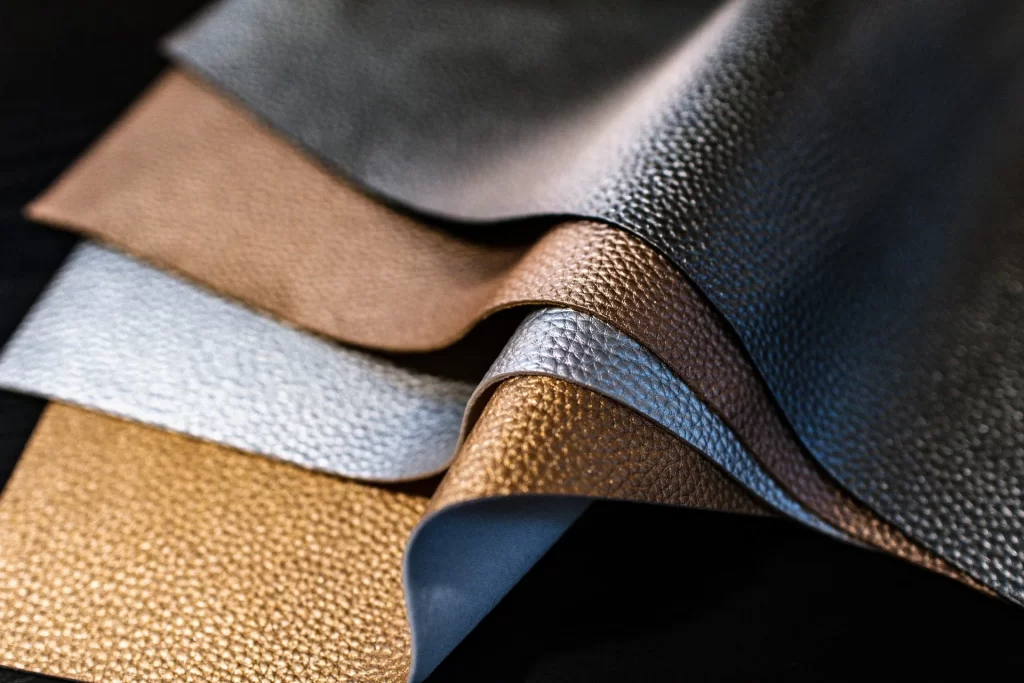The Fascinating World of PU Leather: A Comprehensive Guide
PU leather, also known as polyurethane leather, is a synthetic material that mimics the appearance and feel of genuine leather. It is made from a combination of polymers and other materials, which are applied to a fabric base to create a durable, flexible, and water-resistant surface. In this article, we will delve into the world of PU leather, exploring its history, production process, characteristics, and applications.
The History of PU Leather
The development of PU leather dates back to the 1960s. At that time, the demand for leather was increasing, but the supply was limited due to the scarcity of animal hides. Scientists and manufacturers began to explore alternative materials to meet the growing demand for leather products. One of the most successful alternatives was polyurethane, which was first used in the production of leather in the 1960s.Initially, PU leather was used primarily for upholstery and furniture applications. However, as technology advanced, PU leather became more versatile and was used in a wide range of products, including shoes, bags, and accessories. Today, PU leather is a widely accepted and popular material in the fashion and consumer goods industries.
Production Process of PU Leather
The production process of PU leather involves several steps:
- Fabric Base: The first step is to create a fabric base, which is typically made from cotton, polyester, or a combination of both.
- Coating: The fabric base is then coated with a polyurethane solution. This solution is a mixture of polyurethane resin, solvents, and other additives.
- Drying: The coated fabric is then dried to evaporate the solvents and allow the polyurethane to form a durable, flexible layer.
- Finishing: The finished PU leather is then treated with various finishes to enhance its appearance and durability. These finishes can include pigments, dyes, and protective coatings.
- Curing: The final step is to cure the PU leather, which involves applying heat and pressure to ensure the polyurethane layer is fully bonded to the fabric base.
Characteristics of PU Leather
PU leather has several characteristics that make it a popular choice for various applications:
- Durability: PU leather is highly durable and can withstand heavy use without tearing or cracking.
- Flexibility: It is flexible and can be bent or stretched without losing its shape.
- Water Resistance: PU leather is water-resistant, making it suitable for use in wet environments.
- Easy to Clean: It is easy to clean and maintain, as it does not absorb liquids or stains.
- Cost-Effective: PU leather is generally less expensive than genuine leather, making it a more affordable option for many consumers.
- Versatility: It can be used in a wide range of products, from shoes and bags to furniture and automotive applications.
Applications of PU Leather
PU leather is used in a variety of products due to its durability, flexibility, and cost-effectiveness:
- Shoes: PU leather is commonly used in the production of shoes, including sneakers, boots, and sandals.
- Handbags: It is used in the manufacturing of handbags, backpacks, and other types of bags.
- Furniture: PU leather is used in the upholstery of furniture, including sofas, chairs, and tables.
- Automotive: It is used in the production of car seats, dashboards, and other interior components.
- Accessories: PU leather is used in the production of accessories such as wallets, belts, and phone cases.
Frequently Asked Questions (FAQ)
- What is PU leather?
- PU leather, also known as polyurethane leather, is a synthetic material that mimics the appearance and feel of genuine leather.
- How is PU leather made?
- The production process involves creating a fabric base, coating it with a polyurethane solution, drying the coated fabric, finishing the surface, and curing the material.
- What are the characteristics of PU leather?
- PU leather is durable, flexible, water-resistant, easy to clean, cost-effective, and versatile.
- What are the applications of PU leather?
- PU leather is used in the production of shoes, handbags, furniture, automotive components, and accessories.
- Is PU leather the same as synthetic leather?
- Yes, PU leather is a type of synthetic leather.
- Can PU leather be recycled?
- Yes, PU leather can be recycled, but the process is not as straightforward as recycling genuine leather.
- Is PU leather environmentally friendly?
- The environmental impact of PU leather production depends on the manufacturing process and the materials used. Generally, it is considered less environmentally friendly than genuine leather.
- How does PU leather compare to genuine leather?
- PU leather is less expensive, more durable, and easier to maintain than genuine leather. However, it does not have the same natural qualities and may not be as breathable.
- Can PU leather be used in high-end products?
- Yes, PU leather is used in high-end products, including luxury shoes and bags.
- What are the benefits of using PU leather?
- The benefits of using PU leather include its durability, flexibility, water resistance, and cost-effectiveness.
Comparison of PU Leather with Genuine Leather
| Metric | PU Leather | Genuine Leather |
|---|---|---|
| Durability | High | High |
| Flexibility | High | Medium |
| Water Resistance | High | Low |
| Cost | Low | High |
| Environmental Impact | Medium | Low |
| Breathability | Low | High |
| Natural Qualities | No | Yes |
Source: Wikipedia
Conclusion
PU leather has become a popular alternative to genuine leather due to its durability, flexibility, and cost-effectiveness. While it may not have the same natural qualities as genuine leather, it offers a viable option for many consumers and industries. Understanding the production process, characteristics, and applications of PU leather can help in making informed decisions about its use.
Additional Resources
This article provides a comprehensive overview of PU leather, including its history, production process, characteristics, applications, and comparison with genuine leather. It also addresses common questions and misconceptions about this synthetic material.



